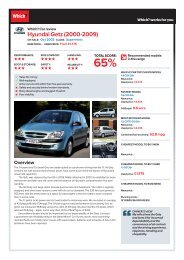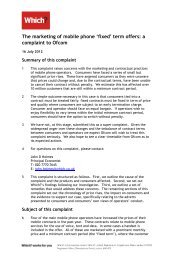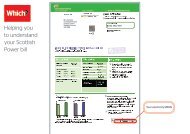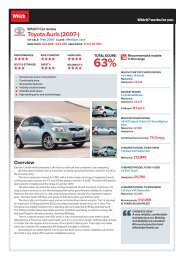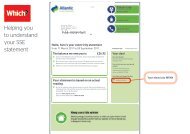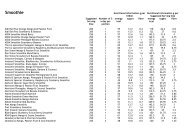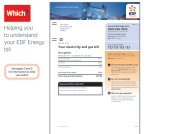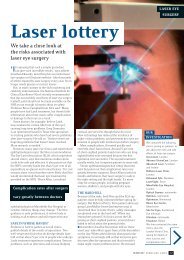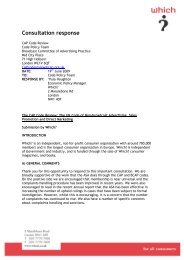Savings and Investments - Magazine
Savings and Investments - Magazine
Savings and Investments - Magazine
- No tags were found...
Create successful ePaper yourself
Turn your PDF publications into a flip-book with our unique Google optimized e-Paper software.
08Are you ready to invest?your children or saving for a pension, you run aserious risk of missing your targets.The safe investments you prefer are unlikely todeliver high-enough returns, making your goalsimpossibly expensive. You’re also likely to run intoproblems if you’re investing to provide an income.As you draw off the income, inflation will eat intothe value of your capital <strong>and</strong> reduce the buyingpower of your income year after year. So be waryof your natural caution <strong>and</strong> focus on the full rangeof risks, rather than just capital risk, when youwork out your long-term investment strategies.Medium-risk investorThis is the ideal type of investor. You have a goodappreciation of various risks involved in saving <strong>and</strong>investing. Your short-term strategies are sensiblycautious. You can accept a bit of capital risk toimprove your chances of a return that will beatinflation <strong>and</strong> make your long-term goals affordable.Focus on identifying the savings <strong>and</strong> investmentsthat will help you put this strategy into practice.Higher-risk investorYou like to spot good chances for profit <strong>and</strong> thenput your money where your hunch is. That’s fine ifyou’re playing with money you can afford to lose,but you may need to tone down this approach ifyou’re investing for the long term or pursuing abig goal, such as an adequate pension. Thinkabout tailoring the risks to the type of goal <strong>and</strong>spread your money across a range of investments,so you don’t have all your eggs in one basket.Short-term goalsShares are volatile over short-term periods.If you need to sell shares within the next fewyears or on a specific date, there’s a risk thatyour shares or the whole stock market maybe in a downturn at that time. A stock-marketslump is not a problem if you can ride it out<strong>and</strong> wait for share prices to bounce back, butit becomes a problem if you have to sell. Forshort-term goals, such as an emergency fundor building a lump sum over five years orless, you generally need to stick to savingson the first rung of the risk ladder (opposite).These are bank/building society accounts<strong>and</strong> most NS&I products (www.ns<strong>and</strong>i.com)that are savings with very low capital risk.The five risksWhen you save or invest, you’re exposed to risk.The lower the risk you’re willing to take, the lowerthe return you can expect. There are five keyrisks you will be exposed to.1Capital riskThe risk you’ll lose some of the money youinvested. Also the risk of losing some or all of thegains you have built up so far. The most obviousinvestments that carry capital risk are stocks <strong>and</strong>shares, where prices can fall as well as rise.2Inflation riskThe risk that your money’s buying power willfall even though you don’t lose any actual pounds.Most bank <strong>and</strong> building society accounts , <strong>and</strong>NS&I products, are particularly exposed to this risk.Shortfall risk3 The risk that your savings or investmentswill not grow enough for you to reach a target.Wortha Tip look For more help with saving <strong>and</strong>investment options, Which?members can get more informationfrom the Which? Money Helpline.www.which.co.uk



